|
Me Sahyadri |
|
December 2016 |
|
Volume 3, number 19 |
|
|
Please use minimum 1280 pixel horizontal screen resolution for viewing. Please be patient while all the images in webpage are loaded. Please do not use the images for any commercial use without permission. Text in Marathi and English is not exact translation. Please give sufficient time to allow the photographs to load. Special thanks to all those who helped me during the compilation and for the help and guidance during the activity. |
|
|
|
|
देशाची आर्थिक प्रगती व्हावी असे सर्व नागरिकांना वाटणे सहाजिक आहे. अर्थकारणामुळे मिळणारा रोजगार, समृद्धी यासाठी सर्वांनाच आर्थिक प्रगती हवी हवीशी वाटते. आर्थिक प्रगती होताना, त्याचा दिर्घकाळात समाजावर, निसर्गावर, वातावरणावर दुष्परिणाम होणार नाही याची काळजी घेणे महत्वाचे आहे. मनुष्याच्या भावी पिढ्यांना पाणी, शुद्ध हवा, योग्य वातावरण मिळत रहावे अशी भावना मनात रुजणे महत्वाचे आहे. वाढत्या आर्थिक प्रगतीमुळे नैसर्गिक संपदेवर ताण येतो. प्रगतीसाठी प्रदुषण होते. जंगले, माळराने, व इतर अधिवास नष्ट होतात. वसुंधरेवर रहाणाऱ्या इतर जीवांचा मात्र मनुष्य फारसा विचार करत नाही. आर्थिक प्रगती करताना, मनुष्य निसर्गाची हानी करत आहे. मुळताच माणसाला निसर्गाचे महत्व समजणे हे सध्याच्या आपल्या प्रगत जीवनशैली मुळे अवघड झाले आहे. आर्थिक प्रगती, समाजाची प्रगती व निसर्ग संपदेची निगा, यांचा समतोल राखणे काळाची गरज आहे.
सह्याद्री (पश्चिम घाट) हा एक नैसर्गिक संपदेचा, वैविध्यतेचा, भौगोलिक व ऐतिहासिक ठेवा आहे. वाढत्या मानवी अतिक्रमणाचा, सह्याद्रीच्या विविध घटकांवर होणारा दुष्परिणाम भविष्यात आपल्यालाच धोका निर्माण करेल, यात शंका नाही. शुद्ध पाणी, हवा व उर्जा, भावी पिढीला मिळण्यासाठी, नंद्यांचे उगम असलेला सह्याद्री व त्याभागातील जंगले टिकवणे महत्वाचे आहे. सह्याद्रीच्या महत्वाच्या घटकांचे महत्व छायाचित्रांद्वारे प्रकट करण्याचा मी येथे प्रयत्न केला आहे. येथील पक्षी, प्राणी, वनस्पती, अधिवास, किल्ले व लेणी अशा विविध विषयांबद्दल आपण समजुन घेऊ.
|
|
As the economic development has taken the center stage, the balance between the environmental sustenance and socio economic development will be under the scanner. As most experts with balanced views have proclaimed, Indian wildlife and ecological system sustenance will be under threat, unless precautions are taken with the help of appropriate research and long term national interests. As we encounter the economic development, many habitats which indirectly or directly help sustainable development will be damaged. The awareness to gauge the success by sustainable development and not by year to year growth is a distant dream any environmentalist will assume in current scenario.
Western ghats, or Sahyadri as we all call it as, is a treasure trove of spectacular landscapes, biodiversity, flora, fauna, some amazing geological wonders and man made monuments. With the increasing pressure from human encroachment, all these elements are under stress and in turn are under depletion. Western ghats should be left untouched by human beings, to protect their future generations from getting short of resources, such as water, energy and clean air. The important elements of western ghats, which need protection are highlighted in the new version of Photo journal, Me Sahyadri Magazine. The current issue has few of the flora from the north Western Ghats.
|
|
|
| |
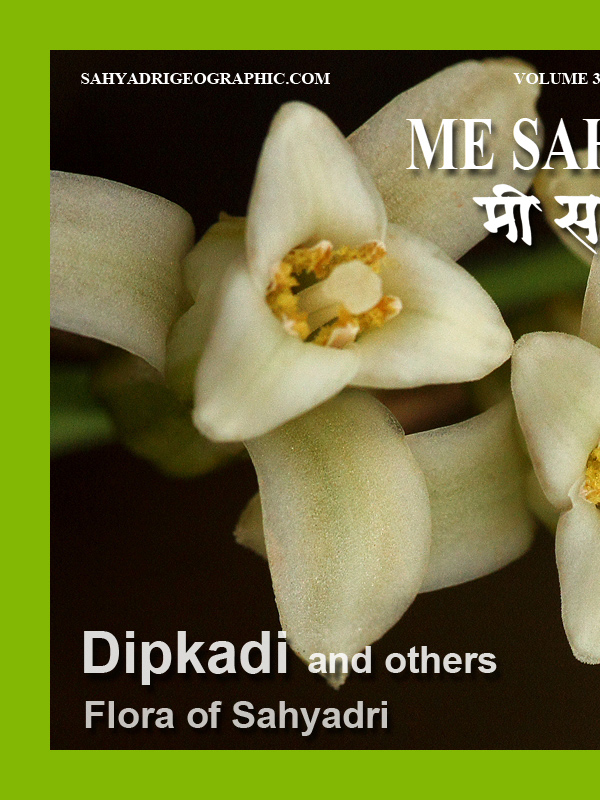 
|
| |
| Me Sahyadri – December 2016
|
| |
|
|
| |
  |
| The banner has been published here to improve the awareness of the trekkers and tourists visiting the various mountain forts, mountains in north western ghats. Please avoid accidents, by following good outdoor ethics such as no swimming in cisterns at mountain forts, no rock climbing without proper technical equipment and expertise. Please do not adventure, trek with any group or individually without understanding the risks associated. The frequency of the solo trekker fatalities have increased recently. Please strictly avoid solo treks. Please also avoid treks to mountains in large commercial groups, as it leads to damage to biodiversity of these high elevation ecological islands. Please respect the wildlife and biodiversity of the region. This has become more important as the ever increasing human interference is leading to severe damage to fragile ecosystems. Please be aware of the wildlife and biodiversity of the mountains before visiting these mountains. Please follow outdoor ethics. Follow ASI and Forest department rules. The concept of use of symbols for outdoor ethics was conceived and designed by "Sahyadri Trekker Bloggers Group". |
| |
|
|
| |
 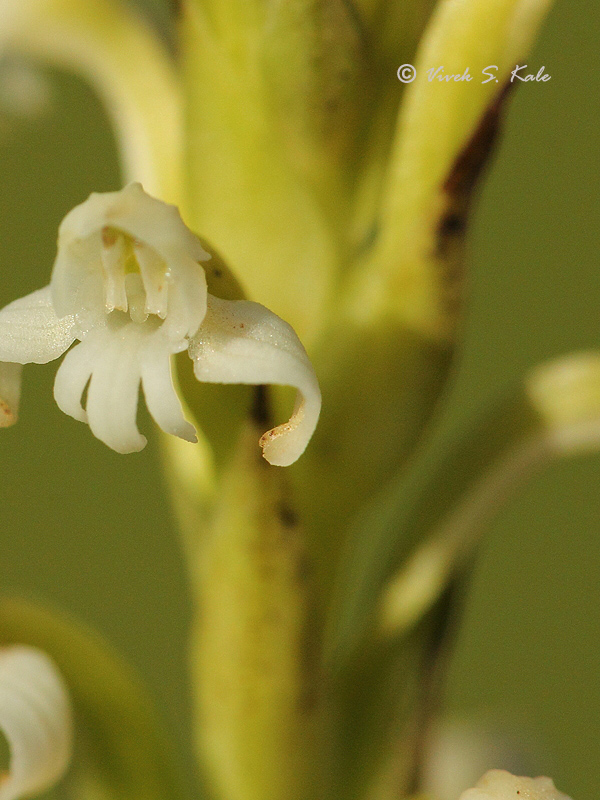 |
| 1. Habenaria brachyphylla, Satara district, Maharashtra, Western ghats, India |
| |
|
|
हबेनरिआ ब्रांचीफिलिया हे एक जमिनीवर उगवणारे लहान ऑर्किड आहे. मराठीत या वनस्पतीला दोपत्ती हबे अमरी असे म्हणतात. जाड पानांच्या या ऑर्किड्ला लहान क्रिम सफेद रंगाची लहान फुले येतात. १५ ते ३५ से मी उंच देठावर ७-८ से मी आकाराची खुप फुले येतात. या वनस्पतीला ऑगस्ट ते सप्टेंबर या काळात फुले येतात. सह्याद्रीच्या घाटमाथ्यावरच्या गवताळ पठारांवर पावसाळ्यात वनस्पती आढळते.
|
|
Habenaria brachyphylia is a terrestrial orchid. It is called as Thick Leaved Habenaria english. The plant is called as दोपत्ती हबेअमरी Dopatti habe-amri in Marathi. The thick Leaved Habenaria is a terrestrial orchid which is about 20-55 cm tall. It is found in the Western Ghats. Creamy white, fragrant flowers are borne in an upright many-flowered raceme which stands on a 15-35 cm long stalk. The flowers are about 7-8 mm wide. The flower is prominently three lobed. The plant flowers in August to September period. The plant can be seen on grasslands in north western ghats.
|
|
|
| |
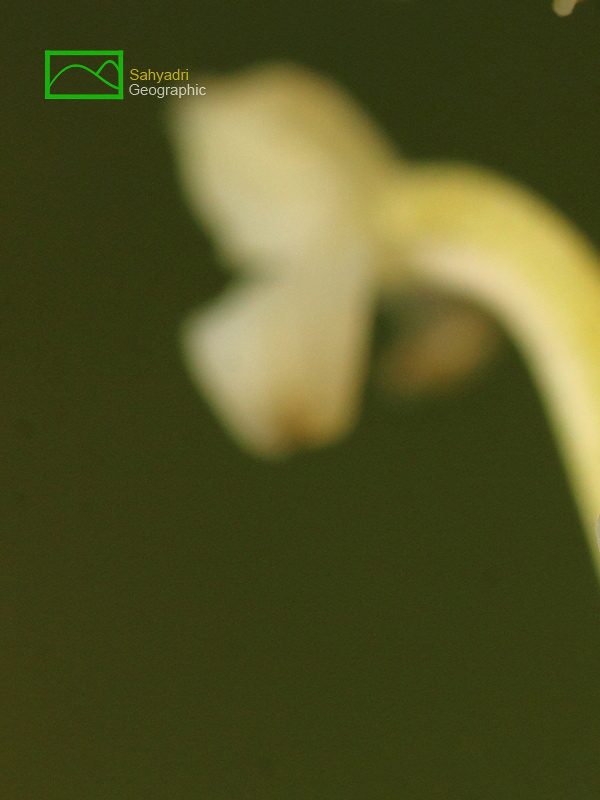 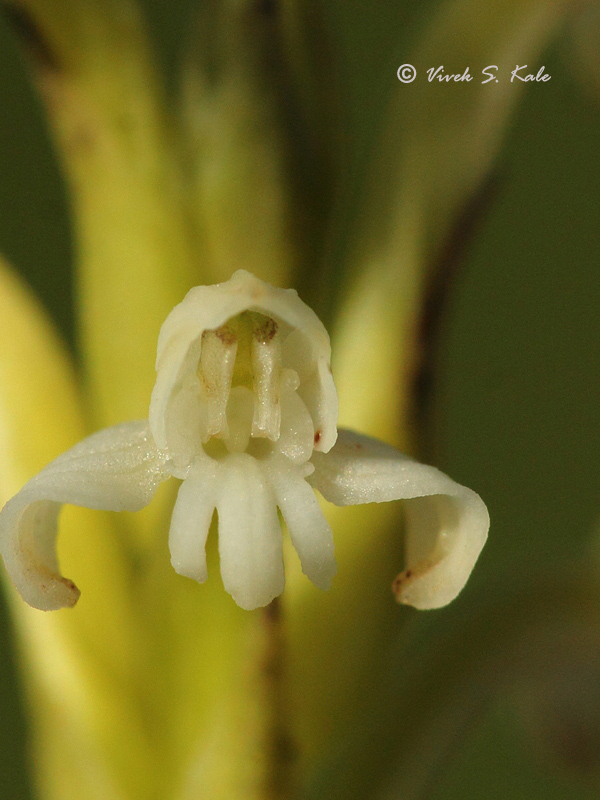 |
| 2. Habenaria brachyphylla, Satara district, Maharashtra, Western ghats, India |
| |
|
|
| |
 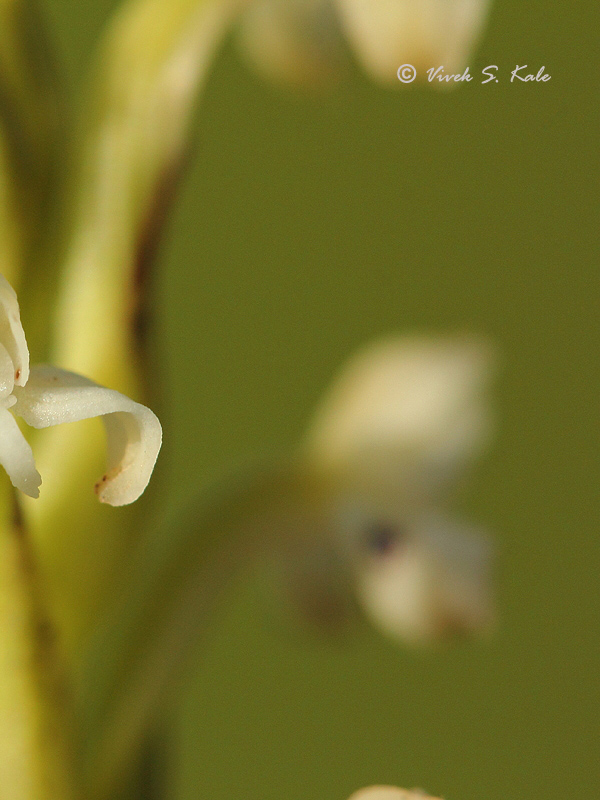 |
| 3. Habenaria brachyphylla, Satara district, Maharashtra, Western ghats, India |
| |
|
|
| |
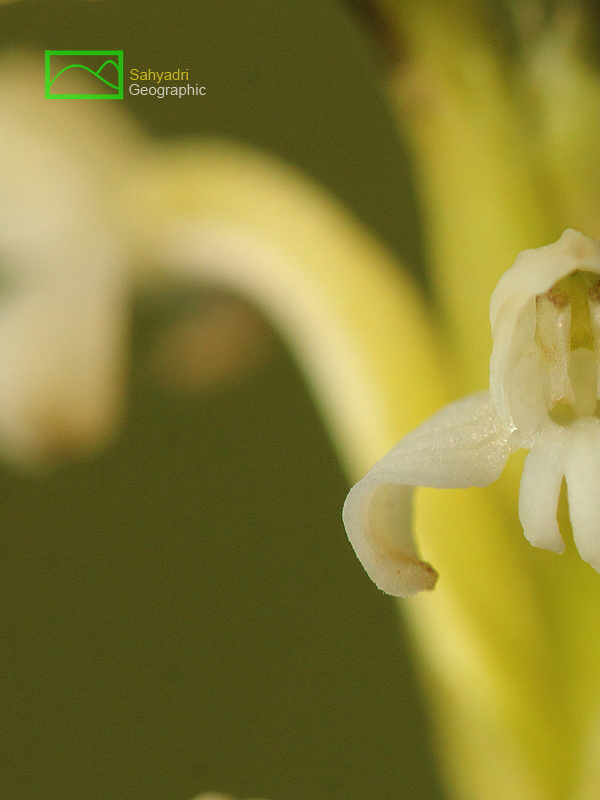   |
| 4. Habenaria brachyphylla, Satara district, Maharashtra, Western ghats, India |
| |
|
|
| |
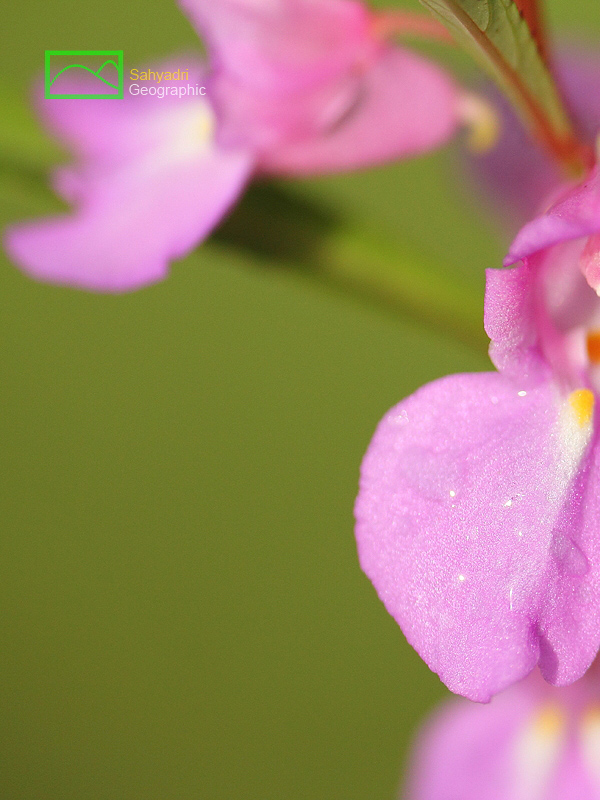   |
| 5. Impatiens balsamina, Satara district, Maharashtra, Western ghats, India |
| |
|
|
इंपेशन्स बालसामिना म्हणजेच तेरडा २५ से मी ते १ मीटर उंचीची एक वनस्पती आहे. तेरड़्याला पावसाळ्यात गुलाबी, लाल किंवा पांढरी फुले येतात. फुलांचा आकार ३ ते ५ से मी एवढा असतो. याच्या बिया स्पर्शाने आवरण तडकुन उडतात व पसरतात. या वनस्पतीचे परागीभवन करण्यासाठी मधमाश्या, लहान पक्षी व इतर किटक मदत करतात. मोबदल्यात मधमाश्यांना पराग न मध मिळते. पावसाळ्यात ऑगस्ट सप्टेंबर मध्ये तेरडा सह्याद्री व इतर भारतात मोठया प्रमाणात आढळतो.
|
|
Impatiens balsamina is a common plant in India, known as garden balsam or rose balsam in common english. The plant is called as तेरडा, Terada in marathi. The plant grows to the height of 25 cm to 1 meter. The flowers are pink, red or white, The flowers are 3 to 5 cm in size. The name of the genus impatiens is based on the phenomenon of the ripe seed capsules of this plant exploding if touched. The plant is common in western ghats and in south east asia. He flowers are pollinated by bees, insects and nectar feeding birds.
|
|
|
| |
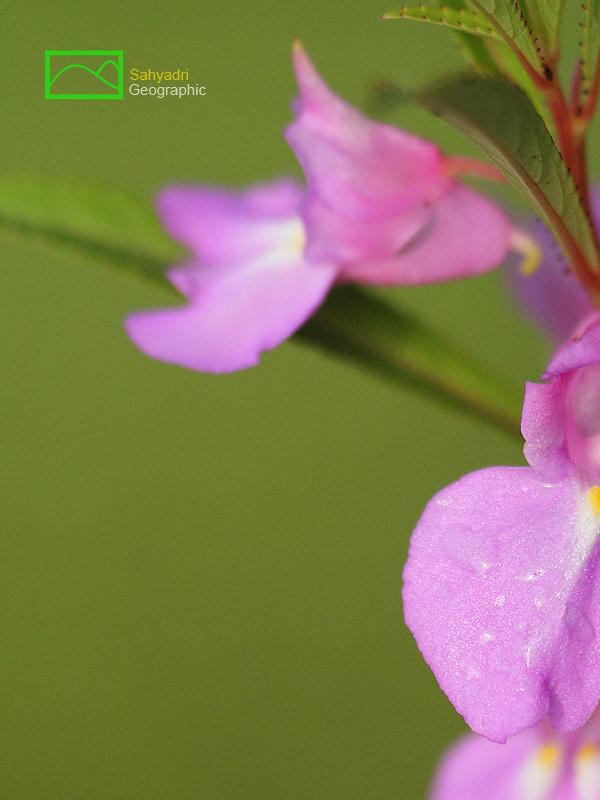   |
| 6. Impatiens balsamina, Satara district, Maharashtra, Western ghats, India |
| |
|
|
| |
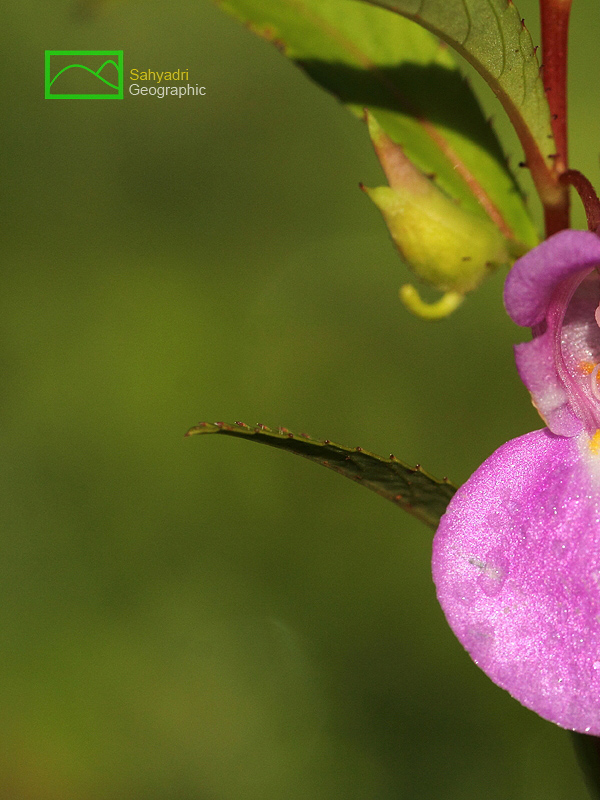 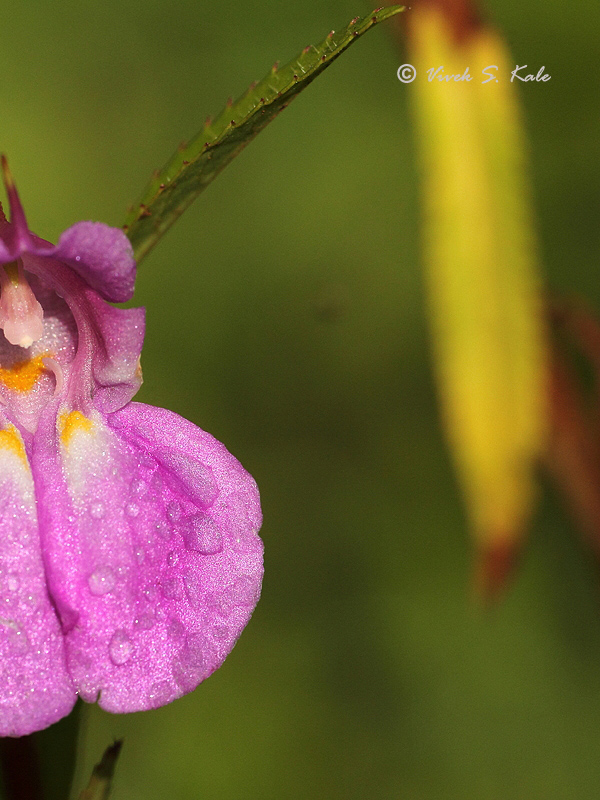
|
| |
| 7. Impatiens balsamina, Satara district, Maharashtra, Western ghats, India |
| |
|
|
| |
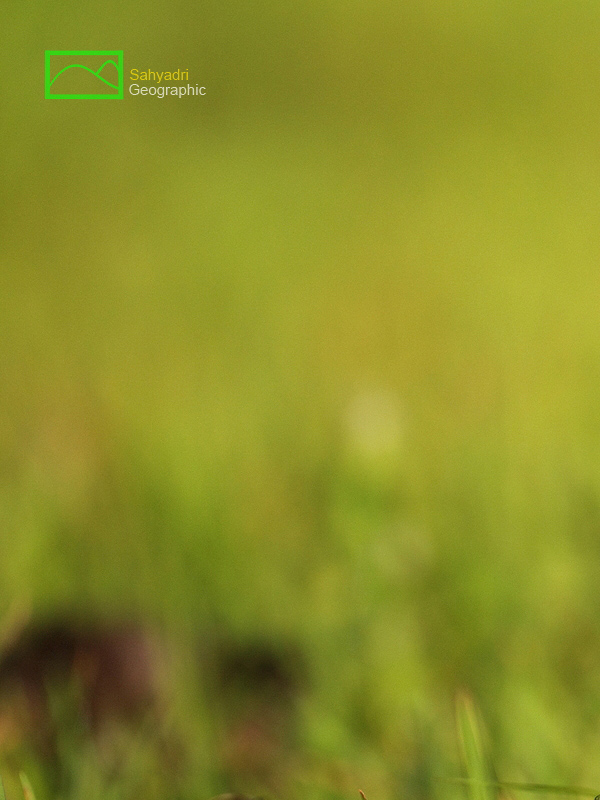 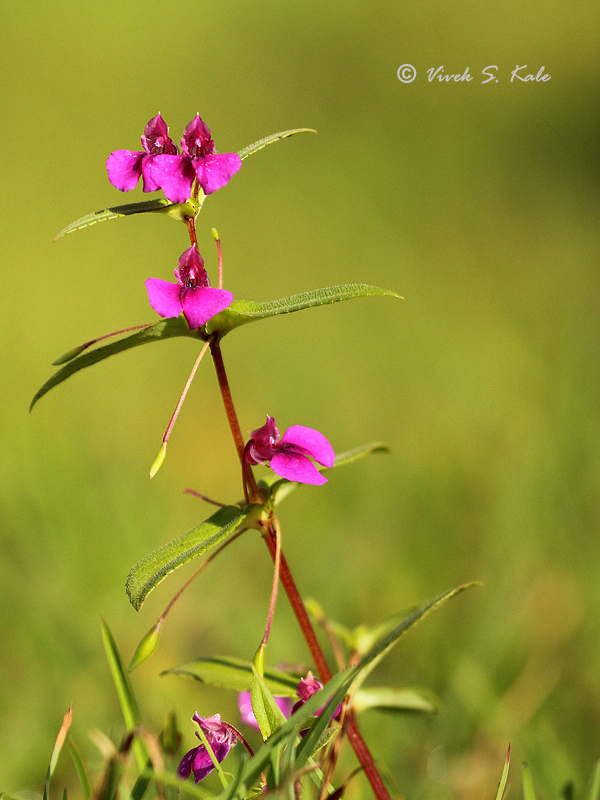
|
| |
| 8. Impatiens balsamina, Satara district, Maharashtra, Western ghats, India |
| |
|
|
| |
 
|
| |
| 9. Peristylus densus, Ground orchid, Satara district, Maharashtra, Western ghats, India |
| |
|
|
पेरिस्टायलस डेन्सस जमिनीवर उगवणारी एक सुंदर ऑर्किड वनस्पती आहे. याला हिरव्या रंगाची फुले येतात. या वनस्पतीला सह्याद्रीमध्ये पावसाळ्यानंतर सप्टेंबर ते ऑक्टोबर या काळात फुले येतात. पेरिस्टायलस डेन्सस वनस्पती सह्याद्री व्यतिरिक्त दक्षिण पुर्व आशिया मध्ये, पुर्व हिमालयातल्या जंगलांमध्ये ३०० ते २१०० मीटर उंचीवर आढळते.
|
|
Peristylus densus, commonly known as
Dense Peristylus is a medium sized, terrestrial orchid The plant has an erect stem with 2-3, tubular, basal sheaths and carrying 4-6, widely spaced, ovate, oblong to oblong-lanceolate, pointed to long-pointed leaves. The plant blooms. Dense Peristylus is found in eastern Himalayas, Western Ghats and south east Asia, in seasonal evergreen and pine forests and moist grasslands at elevations of 300-2100 m. The plant flowers in May to October. In western ghats the plant flowers in August-October, and can be seen on the moist grasslands
|
|
|
| |
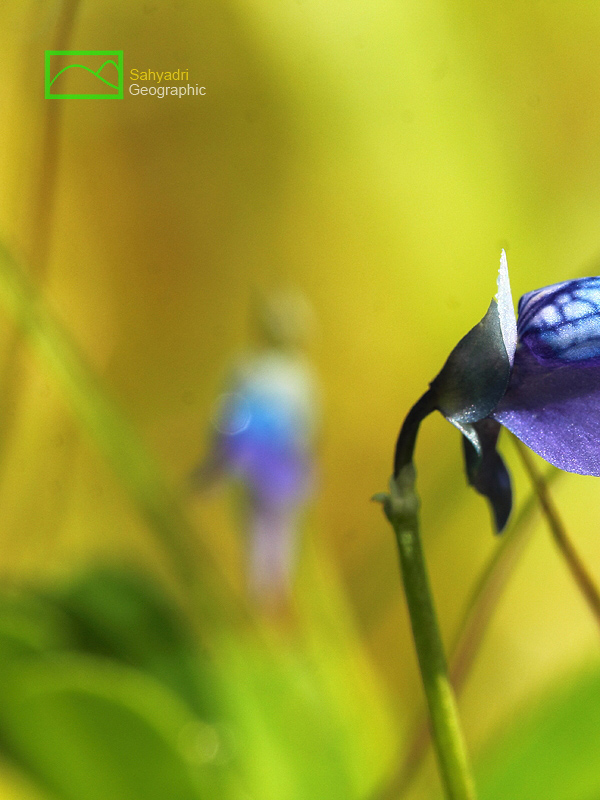 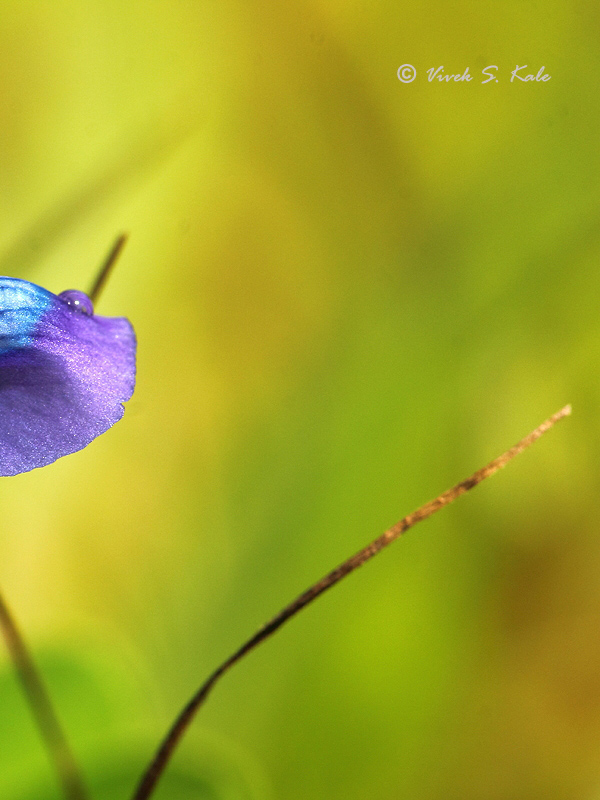
|
| |
| 10. Utricularia species, Satara district, Maharashtra, Western ghats, India |
| |
|
|
युट्रिक्युलेरिआ जातीच्या वनस्पती किटकभक्षी वनस्पती आपला सह्याद्रीत आढळतात. या वनस्पती अत्यंत लहान असतात. पावसाळ्यात पाणथळ ठिकाणी या वनस्पती उगवतात. या वनस्पतींना टोकावर फुल येते. वनस्पतीला पाने नसतात. जमिनीखाली मात्र या वनस्पतीच्या मुळांचे जाळे असते. या जाळ्यात लहान लहान फुग्यांसारख्या पिशव्या असतात. या पिशव्यांना एक लहान तोंड असते व त्याला एक झाकण असते. झाकणाबाहेर तंतु असतात. पिशव्यांना बाहेरुन सुक्ष्म जीवांना आकर्षित करता येईल असे आवरण असते. तंतु चा हालचालीमुळे झाकण उघडते. बाहेरचे पाणी सुक्ष्म जीवांसकट पिशवीच्या आत जाते. झाकण क्षणभरात बंद होते. पिशवीच्या आत असलेल्या पाचक द्रव्यांमुळे सुक्ष्म जीव विरघळतात व वनस्पतीला खाद्य मिळते.
या दरम्यान पिशवीच्या आवरणातुन आतले पाणी हळु हळु बाहेर पाझरते. हि प्रक्रिया ओसमोसिस मुळे होते. पिशवी रिकामी झाल्यावर पुन्हा झाकण उघडले जाते. पुन्हा बाहेरचे पाणी जीवांसकट आत घेतेले जाते. अशी प्रक्रिया सतत घडते राहाते.
पावसाळ्याअखेर वनस्पतीच्या बिया आजुबाजुस पसरतात. वनस्पती वाळुन जाते. पुढच्या पावसाळ्य़ात पुन्हा उगवते. असे निसर्ग चक्र चालु रहाते.
सर्व किटक भक्ष वनस्पतींमध्ये युट्रिक्युलेरिआची जीव पकडण्याची पद्धत सर्वात जास्त गुंतागुंतीची व प्रभावी आहे.
शास्त्रीय भाषेत या वनस्पतीला युट्रेक्युलेरिआ असे म्हणतात.
|
|
Utricularia plants are commonly called as bladderwort plants.The important part of any bladderwort plant is beneath the surface of soil. The prominent flowering stem can be seen above the ground. This plant has long branching network of stems beneath the surface. The small bladder traps and leaves are attached to these stems. The word utricularia is derived from latin word utriculus. It means a small wine bottle. This small bag or a bladder has a opening which is sealed. The bladder has external secrations to attract the small organisms.
The bladder or a small bag has tiny hair like structures, which act as a trigger to open the seals of the bladder. If the trigger is actuated, the small bladders are filled with water as the seals of the bladder are opened. With the water small organisms such as protozoa enter the bladder. This is a process which happenes in a split second. Once inside the prey is dissolved due to digestive enzymes secreted by the plant.
The water is slowly pumped out of the bladder, creating the vacuum inside. Inspite of vacuum the bladder does not collapse. The water is pumped out by osmosis process, through the thin membranes of the bladder. Once the pumping stops due to osmosis, the seals open. As the seals open, the water enters inside due to the vacuum generated. This process continues in cycles.
It is said that these plants have the most sophisticated trapping mechanism among all the carnivorous plants.
|
|
|
| |
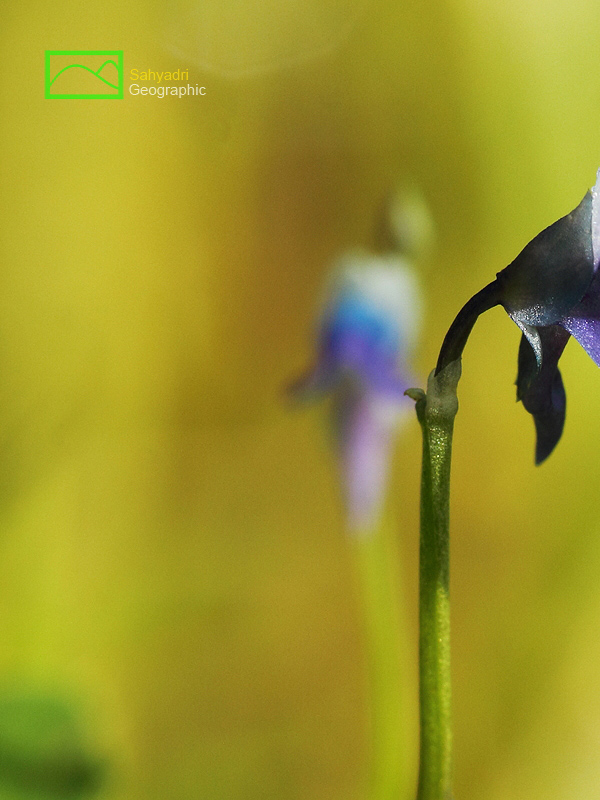 
|
| |
| 11. Utricularia species, Satara district, Maharashtra, Western ghats, India |
| |
|
|
| |
 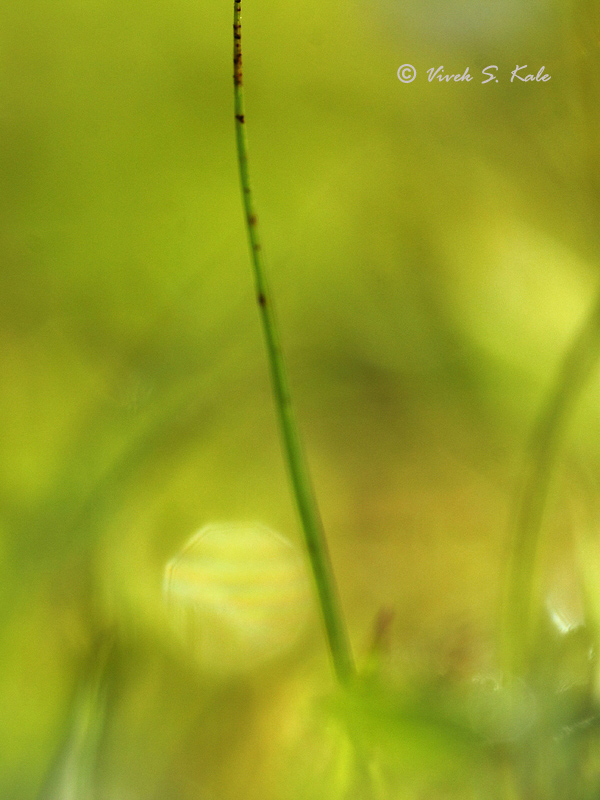
|
| |
| 12. Utricularia species, Satara district, Maharashtra, Western ghats, India |
| |
|
|
| |
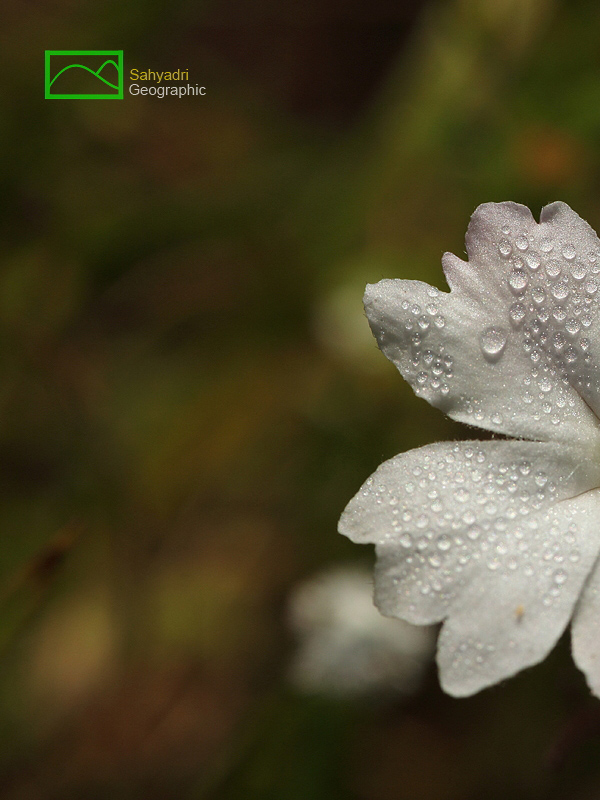 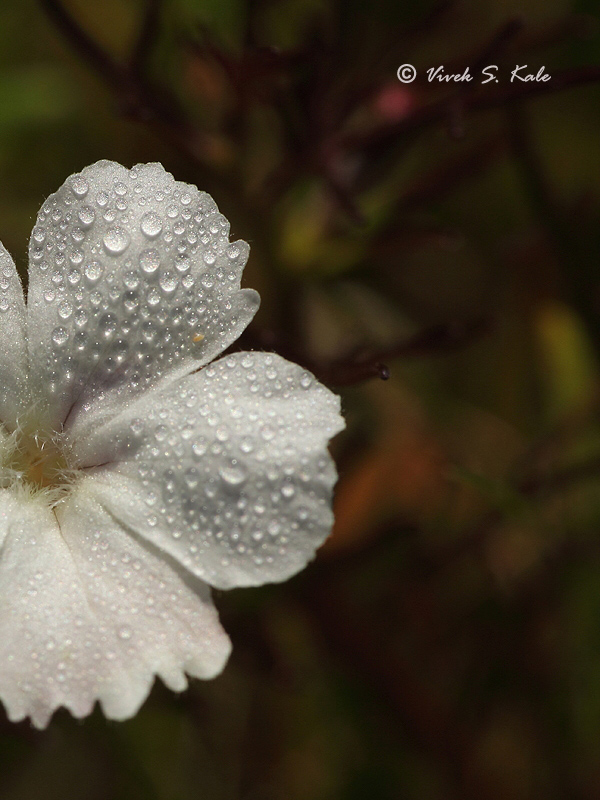
|
| |
| 13. Porana malabarica, Satara district, Maharashtra, Western ghats, India |
| |
|
|
| |
 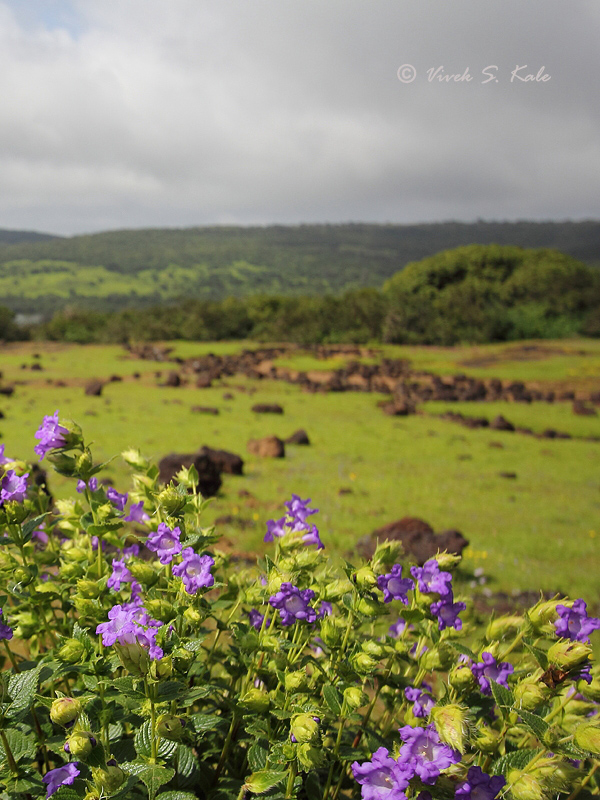
|
| |
| 14. pleocaulus ritchiei, Satara district, Maharashtra, Western ghats, India |
| |
|
|
टोपली कारवी च्या टोपल्या आपल्याला सह्याद्रीच्या घाटमाथ्यावर डोंगर उतारावर व सपाटीवर आढळतात. या वनस्पतीस प्लिओकौलस रिची असे म्हणतात. या वनस्पतीला ७-८ वर्षानंतर फुले येतात. या प्रकारे काही वर्षानंतर अश्या प्रकारे फुले येण्यास "मास्ट सिडिंग" असे म्हणतात. असे का अस्सवे याचे बरेच शास्त्रीय तर्क आहेत. फुलांवर मधमाश्या व लहान गवत पक्षी मध व पराग गोळा करताना दिसतात. यामुळे वनस्पतीस परागीकरण होण्यास मदत होते.
|
|
Pleocaulus ritchie is called as Topli karvi in Marathi. The plant is shaped semispherical and is low on the ground. The plant blossoms once in seven to eight years, Such flowering phenomenon is called as Mast seeding. The intermittent production of large seed crops by population of plants is called as Mast seeding. This phenomenon is seen in some long lived plants which are less affected by the cost of not reproducing in some years. The plants are pollinated by various grassbirds, honey bees and insects. These plants are often seen on the edge of the Deccan plateau at higher altitudes, both on baslat as well as lateritic plateaus.
|
|
|
| |
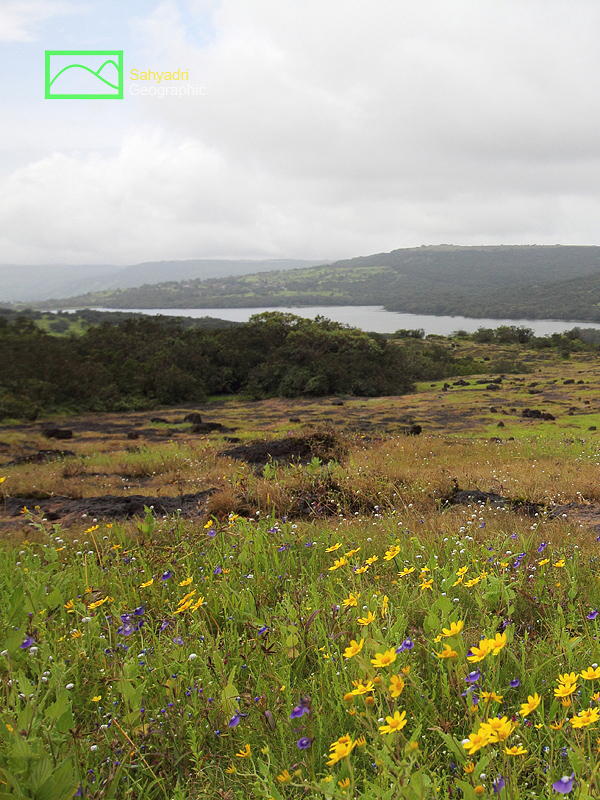 
|
| |
| 15. Lateritic plateau, Satara district, Maharashtra, Western ghats, India |
| |
|
|
| |
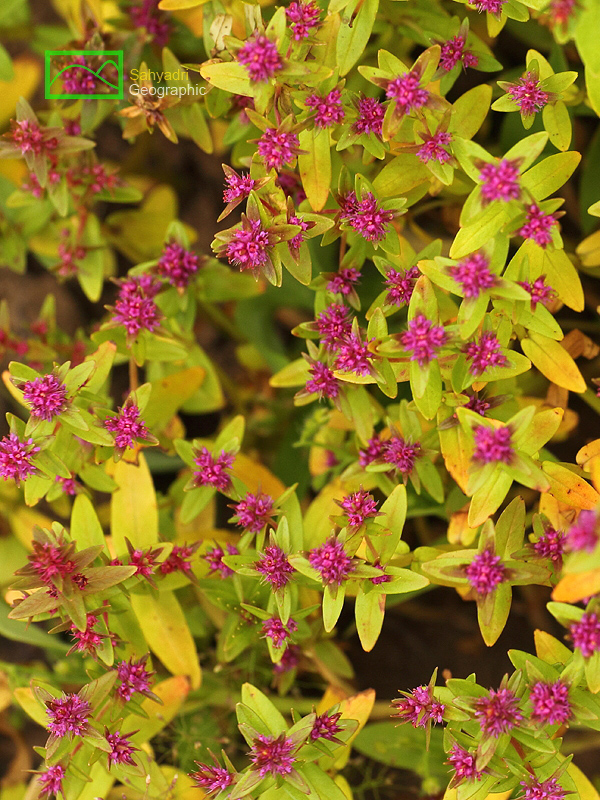 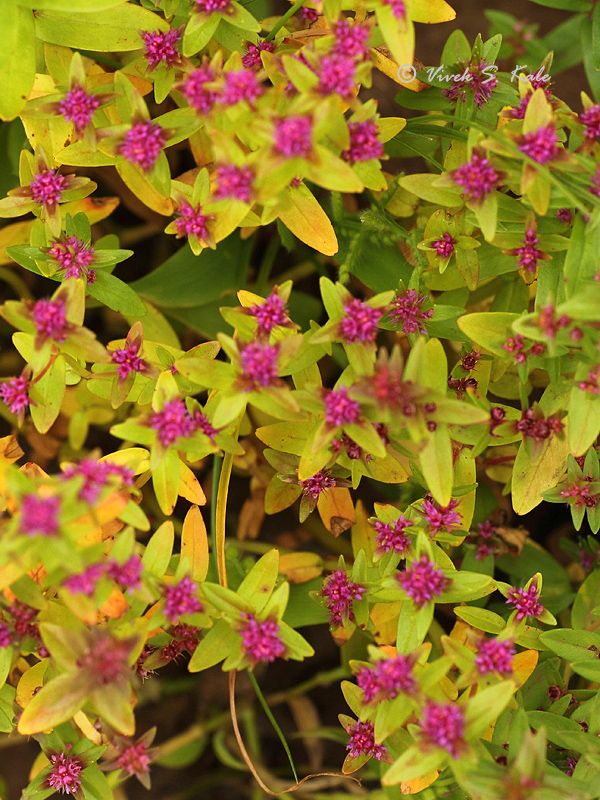
|
| |
| 16. Pink Manjiri, Satara district, Maharashtra, Western ghats, India |
| |
|
|
| |
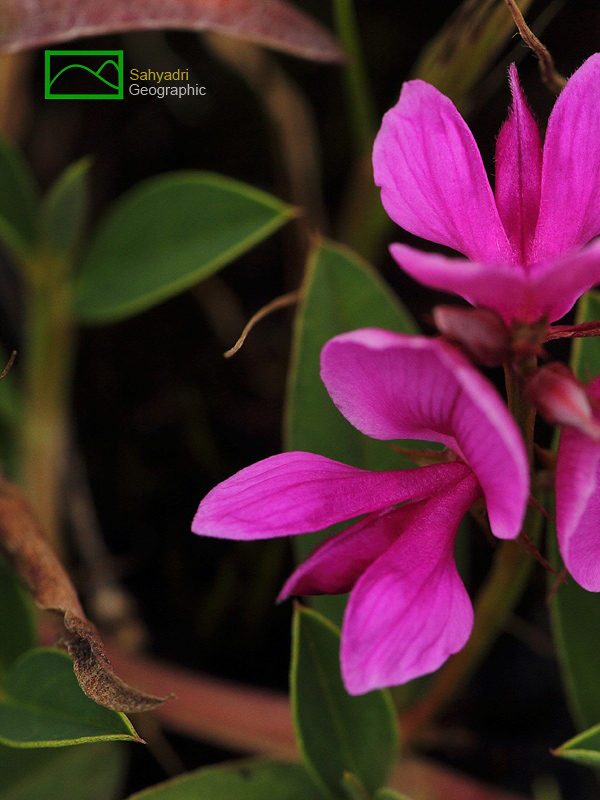 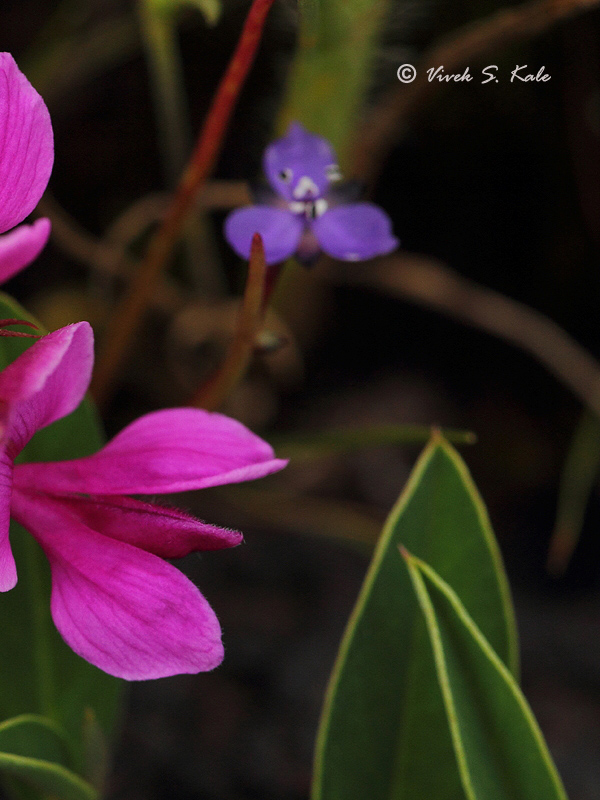
|
| |
| 17. Indigofera linifolia, Satara district, Maharashtra, Western ghats, India |
| |
|
|
इंडिगोफेरा लिनिफोलिया खडकाळ जमिनीलगत येणारी लहान वनस्पती आहे. याला इंग्रजीत नॅरोलिफ इंडीगो असे म्हणतात. या वनस्पतीला मराठीत लाल गोधडी असे म्हणतात, या वनस्पतीला ४ ते ८ मीलीमीटर आकाराची लहान फुले येतात. फुलांचा रंग लाल असल्याने या वनस्पतीला लाल गोधडी असे म्हणतात. हिंदी मध्ये याला रतनमाला किंवा रतन्ज्योत असे म्हणतात.
|
|
Indigofera linifolia is a much branched plant with narrow leaves. It is known as Narrowleaf Indigo in common english. The plant is known as लाल गोधडी Lal godhadi in Marathi and is known as रत्नमाला Ratnamala, रतनजोत Ratanjot in Hindi. The has red flowers which are 4 to 8 mm in size. The plant can be seen all across north western ghat rocky plateaus.
|
|
|
| |
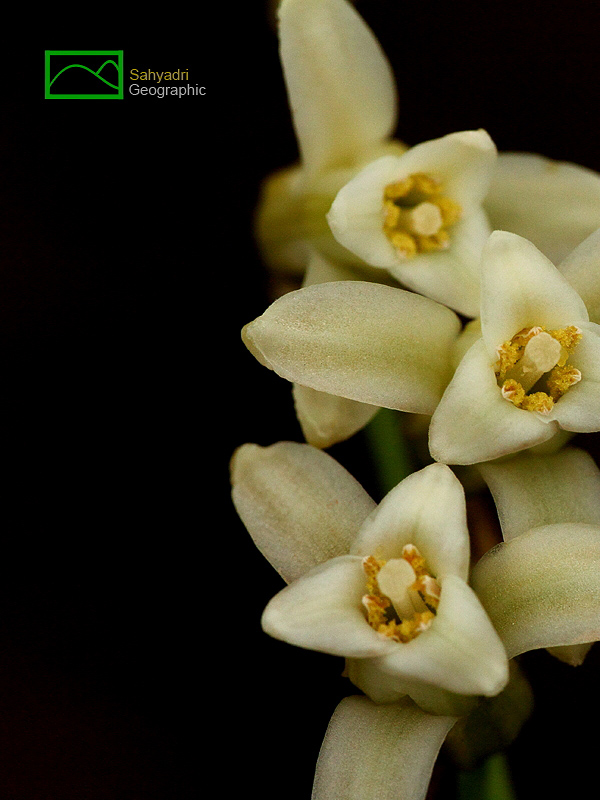 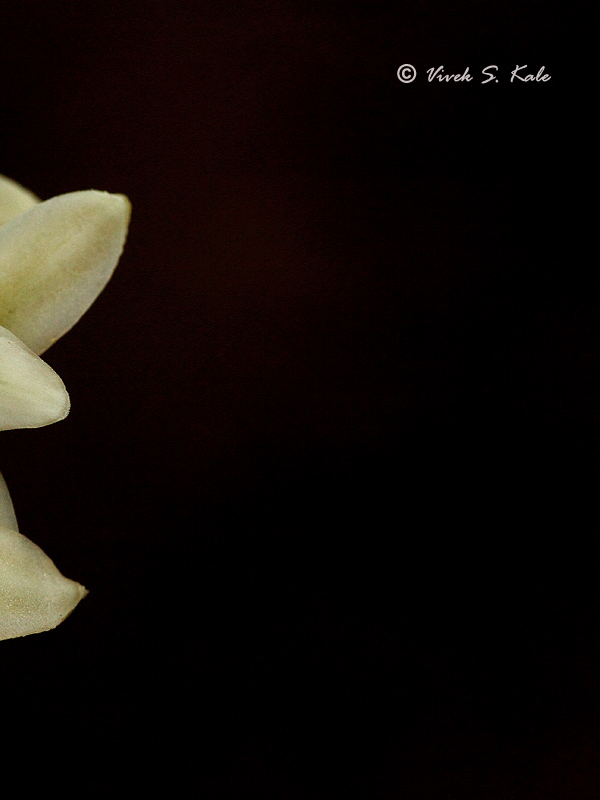
|
| |
| > 18. Dipcadi ursulae, Satara district, Maharashtra, Western ghats, India |
| |
|
|
दिपकाडी उर्सुलाई खडकाळ जमिनीलगत येणारी १५ ते २५ से मी उंचीची लहान वनस्पती आहे. याला इंग्रजीत उर्सुलाई दिपकाडी असे म्हणतात. या वनस्पतीला मराठीत दिपकाडी असे म्हणतात, या वनस्पतीला १० ते १५ मीलीमीटर आकाराची लहान फुले येतात. फुलांचा रंग पिवळट पांढरा असतो. या वन्स्पतीला पावसाळ्यात ऑगस्ट ते ऑक्टोबर दरम्यान फुले येतात. दिपकाडी उर्सुलाई थ्रेटन्ड प्रजाती असुन, सह्याद्रीत अंतर्जन्य आहे.
|
|
Dipcadi ursulae is a small plant seen on lateritic plaetaus in western ghats, India, known as Ursula’s dipcadi in common english. The plant is called as Dipkadi in marathi. The plant grows to the height of 15 cm to 25 cm. The flowers are yellowish white, The flowers are 10 to 15 mm in size. The plant is threatened species and is endemic to western ghats. The plant flowers in August to October season.
|
|
|
| |
 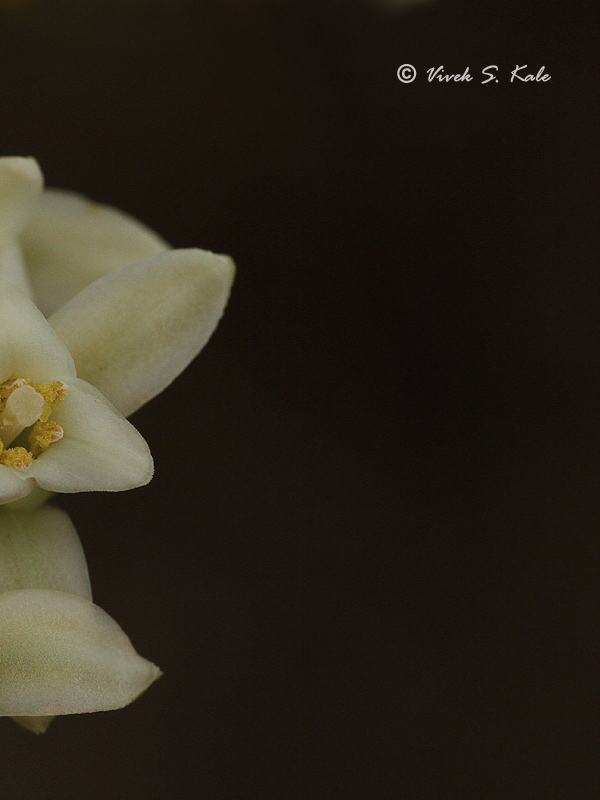
|
| |
| 19. Dipcadi ursulae, Satara district, Maharashtra, Western ghats, India |
| |
|
|
| |
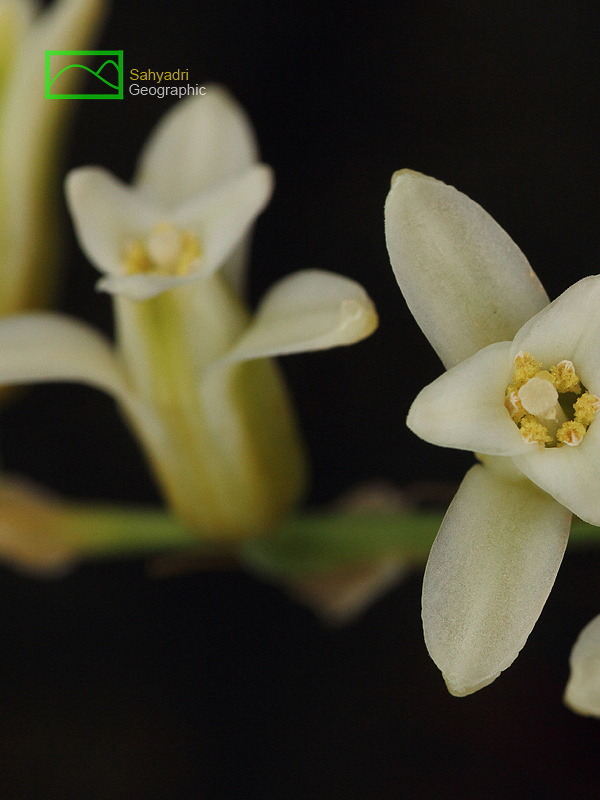 
|
| |
| 20. Dipcadi ursulae, Satara district, Maharashtra, Western ghats, India |
| |
|
|
| |
|













































